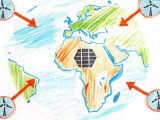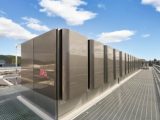
Westport Charges into China’s Hydrogen Infrastructure with Innovation Center
August 14, 2025Westport Fuel Systems Inc. confirmed plans to open a Hydrogen Innovation Center and manufacturing plant in China by late 2025. Over 50% of its HPCS revenue now comes from China—up from virtually zero two years ago. The Canadian cleantech firm is doubling down where Western budgets for hydrogen production and fuel cell technology are tightening.
Technical Dive
HPCS components—valves, regulators, high-pressure fittings—are the unsung heroes of safe hydrogen storage and delivery, powering FCEVs and ICE retrofits. Meanwhile, High-Pressure Direct Injection (HPDI) engines, designed to be fuel-agnostic, are in trials for hydrogen with a China debut eyed around 2030 as part of the zero-emission technology wave.
Strategic Angle
Westport’s HPCS revenues slid from US$3.6 million in Q2 2024 to US$2.9 million in Q2 2025 amid a global hydrogen slowdown. At the same time, the Cespira JV with Volvo is racking up US$12 million YTD in 2025—triple last year’s pace—thanks to China’s state-led push and Europe’s LNG demand. Building local manufacturing and R&D in China helps hedge Western policy risks, cut logistics costs and tap into broader industrial decarbonization trends.
Company Context
Founded in 1995 as an LNG/CNG specialist, Westport ditched its Light-Duty segment in early 2025 to zero in on commercial transport and hydrogen. This China move cements a strategy shift that began with the Cespira JV and follows the rollout of over 390 hydrogen refueling stations there—the world’s largest network of hydrogen infrastructure.
Perspective
This feels like more than just opportunism—it’s survival of the fittest. If Western grants remain flat, only companies with local scale and state backing will thrive. Westport’s China bet might pay off big or leave it vulnerable if policies change.
Closing Insight
Will Westport’s China strategy spark a global arms race in hydrogen production or cement two separate ecosystems? Watch Beijing’s subsidy signals—they’ll make or break this high-stakes game in zero-emission technology and industrial decarbonization.



 With over 15 years of reporting hydrogen news, we are your premier source for the latest updates and insights in hydrogen and renewable energy.
With over 15 years of reporting hydrogen news, we are your premier source for the latest updates and insights in hydrogen and renewable energy.